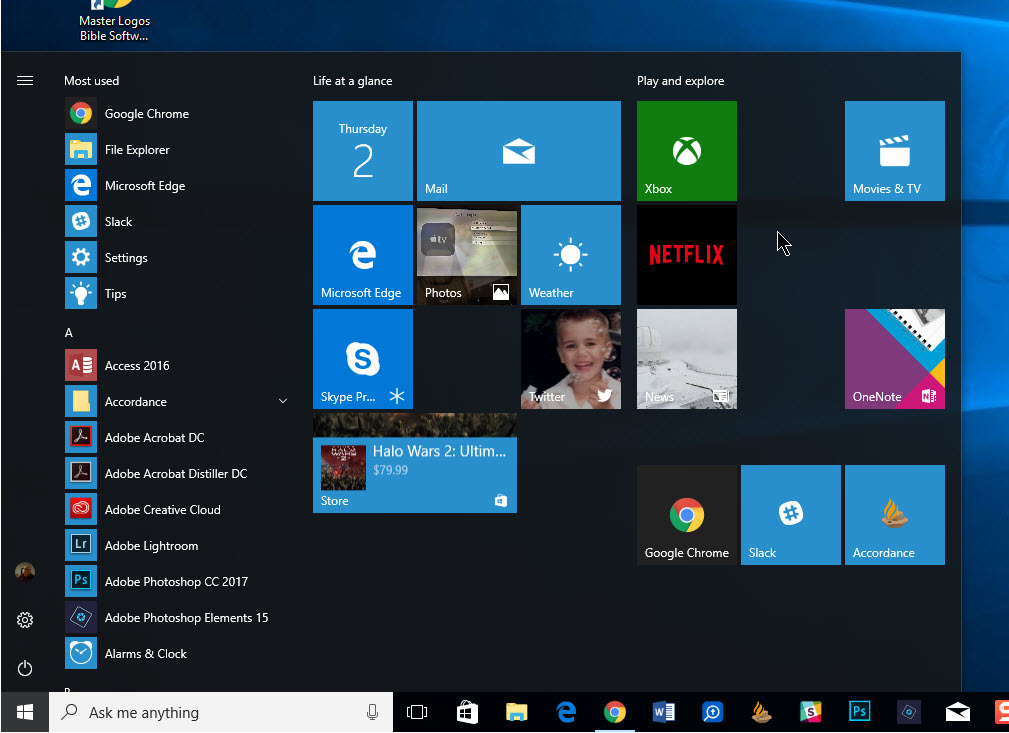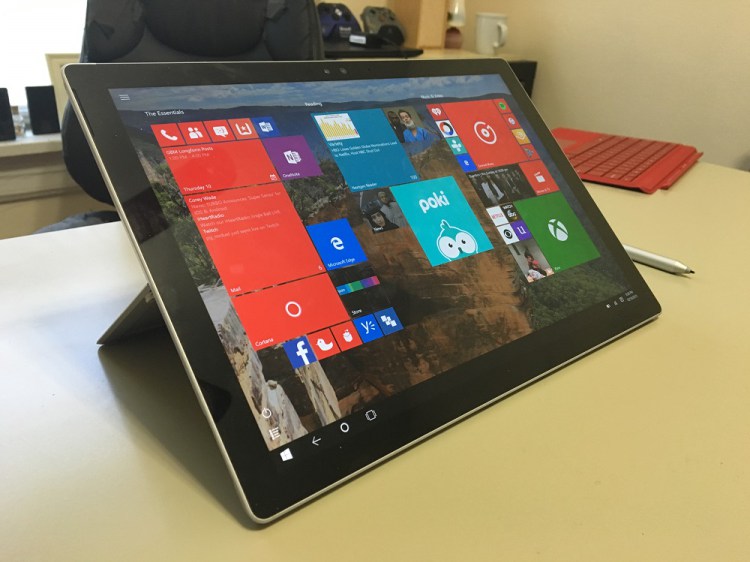So you have finally made the move from Windows XP to Windows 7, everything is working great, but a few things have changed. Yes indeed, there is a new look, but a familiar experience along with numerous changes and improvements since the release of Windows XP back in October 2001. For some persons, it might be a bit overwhelming, to help make the transition a smooth one, here is a quick guide to help familiarize yourself with some of the changes and benefits:
Welcome
As with every new install or first time use of Windows, the first interactive experience is logging in. Depending on how your PC is setup, you might or might not see the Account Screen when you start your Windows session, for those who do, here is a look at some of the changes:
When Windows XP was released back in 2001, it was seen as a major upgrade that focused on ease of use and friendliness, the Welcome sequence and log on screen featured warm, inviting thumbnails that easily identified your account and log in name. With Windows Vista, Microsoft made a few changes by changing the layout and removed a few things. Your accounts are displayed in horizontal layout, instead of the vertical view from XP. Some other functionality introduced in XP such as your amount of unread email notifications are not displayed in Windows 7. A nice welcome optional feature is CTRL-ALT-DEL command, which adds secure log on protection that can be managed through Group Policy (depending on the edition of Windows 7 you have installed) when unauthorized individuals or key loggers attempt to steal your account information. Also, you cannot take a screenshot of the Account Screen like you did in Windows XP. The Classic NT/2000 Log On dialog is not an option in Windows 7 for obvious reasons, if you log on to Domain to access a business network, there are some slight changes which I will take a look at in a future post.
Desktop
The first thing you see when you log on with your credentials is the Desktop, you will of course notice familiar experiences like your personal background. But you might see some other differences, like Gadgets. With Windows Vista, Microsoft introduced Sidebar Gadgets which are small (some cases) web based applications that provide quick access to information such as the latest news from your subscribed website’s, a slide show, Clock, CPU/Memory monitor, Weather and others that are included by the manufacturer of your PC. Gadgets are fun to use and you can get many more from www.gallery.microsoft.com, you can position them anywhere on the Desktop, resize them or just snap them to any side of your screen. You can quickly access them when you are within an application by using the hot keys ‘Windows key + G’ or ‘Windows key + space bar’ to see them on your desktop.
Taskbar & Start menu
The Taskbar first introduced in Windows 95 has been significantly enhanced, instead of features like Quick Launch, and labeled buttons, the Taskbar uses detailed icons to represent shortcuts and running applications. I will take a look at in a future post.
Tip: Want a more familiar look to Windows XP? You can achieve this by right clicking the Taskbar, click ‘Properties’ > Taskbar (tab) > check under Taskbar appearance ‘Use small icons’. In the Taskbar buttons: list box, click ‘Never combine’ > click Apply and OK.
The Start button has been redesigned using a universal symbol that every PC user can understand. Instead of translating the word ‘Start’ in hundreds of languages, a simple effective pearl logo represents the keypad to accessing your programs and files. With Windows 7, Microsoft has removed some of the legacy that you have been seeing in previous releases. For instance, the Start menu does not include the option of Windows Classic anymore and with good reasoning considering the clean look in addition to its accessible design, along with its built in Instant Search capabilities the Windows 7 Start menu is much friendlier and easier to use.
All Programs
Along with the Start menu, is the All Programs Group, in Windows XP, you had cascading menus, that would often go off the screen if you had many applications installed. Windows Vista introduced a hierarchical view that makes it easy to browse through all the programs installed on your computer. With Windows 7, you don’t even have to go to the All Programs group, just search for the program name using the built in Instant Search box integrated into the Start menu.
Certain menu functions have been hidden such as the Run menu, which you can easily access by using the Windows Key + R command or you can find it under the Accessories menu. The ‘Connect To’ menu which stores all your available network connections in Windows XP has been replaced by the more convenient and more accessible (View Available Network) connections menu situated in the notification area. Simply click the display icon and you will see a list of all your available connections: Dial-up, Hi-speed Broadband, VPN etc.
Network Notifications
Back in Windows XP, Network notifications were identified by two blinking displays. Windows 7 displays only a single Monitor (display) or Wireless signal bar icons indicating when a connection is available. I personally don’t like it, I thought Vista’s Network icon was just perfect and quickly identified when you were connected to the Internet, Network or not connected at all.
The Recent Items menu is no longer displayed because the Start menu intelligently handles this through Jump List which displays a list of the recently accessed or created files in the programs you recently used on the Start menu or shortcuts on the Taskbar when you right click them. Another menu link that is not displayed is Favorites, you can Search the Start menu for your favorite website links or go to your User folder > Favorites to access all your website links.
Tip: If you would like the option of displaying these menus on the Start menu, simply right click the ‘Taskbar’, click ‘Properties’ > select the ‘Start Menu’ tab > click ‘Customize’ > in the dialog displayed, check off the appropriate menu links ‘Connect To’, ‘Favorites’, ‘Recent Items’ and the ‘Run’ command.
User folder
Windows Vista introduced some changes to the account folder structure. If you are familiar with the Documents and Settings folder which stores all the accounts on the computer along with your personal folder data such as My Documents, My Pictures, My Music, My Videos etc, it has now been replaced by ‘User’. Just like in Windows XP, within each account folder you will find your personal folders such as Documents, Music, Pictures and local settings such as AppData which stores user settings such as cookies, dictionaries, and different types of data for applications you might have installed on your computer.
Another change you might see coming from Windows XP is the Public folder, this replaces your Shared Documents folder where you store information for other users on your computer or network can access. The relevance of Public folder itself has decreased in Windows 7 with the introduction of Libraries which makes it easy to share files and resources with other users on your home network simply by using a password.
What happened to ‘My’
Instead of using the ‘My’ prefix as a part of personal folders, common content locations are simply represented by their names Documents, Music, Pictures, Videos etc. Former Microsoft employee and Vice President of Platforms, Jim Allchin gave the reason for removing ‘My’:
The company introduced the my†prefix in part to give users obvious places for storing their own files, Allchin said. (Although users can rename the standard folders, and create their own, many tend to stick with the default Windows naming structure.) He acknowledged that the company also was aiming to make the experience more personal.
But now, the my†prefix has become so ubiquitous in the technology industry that it’s no longer the distinguishing characteristic the company hoped it would be. In part, Allchin attributed the situation to the tendency of software developers to adopt the common Windows terminology when making programs that run on the Microsoft operating system.
People got carried away,†Allchin said in a recent interview. Anytime Microsoft does something, everybody wants to do it. … It became a worthless descriptor.â€
Explorer & Address Bar
Windows Explorer has changed significantly, adding more consistency and simplicity across folders. The Standard toolbar and Drop Down menu you are accustomed to seeing have been replaced by the Command Bar, which features contextual task and quick options for managing your folder views. If you want to do occasional task such as copy and move files, you can quickly invoke the Drop Down menu by pressing ‘Alt’ on your keyboard or use drag drop by expanding the folder tree in the Navigation pane.
The Address Bar works more intelligently in Windows 7/Vista, displaying quick shortcut paths within a folder hierarchy called bread crumbs. The enhanced Address Bar features drop-down menus along the current navigation path, enabling you to easily backtrack or navigate forward, anywhere along an address location. Search in Explorer is a major feature, the Instant Search capabilities makes it easy to find files within a folder, Windows 7 in particular introduces some major innovations I will take a look at in a future post.
The Task Pane in Windows XP has also been replaced by the Command Bar, previous functionality can be found there and in the preview pane situated at the bottom of the window which displays file size along with picture, video thumbnails and meta data information. The Navigation pane introduced in Vista features a clean design, divided into 5 common locations such as your Favorites for commonly accessed folders, Computer environment which stores your hard disk, optical media and removable storage. Libraries stores your data folders and aggregates all your personal files there for documents, pictures, music and videos. Network displays all the available computers you can access and shared locations.
Some other common functions and changes you might experience is how files are organized, some quick improvements you will notice include how files are grouped along with changes to things you often did in Windows XP.
- You cannot move around files using drag and drop.
- Alphabetical grouping is now ranged, meaning, instead of listing every file name from A-Z they are conveniently grouped by A-H, G-K etc.
Other file view changes include the removal of Film Strip view, instead you can view large quick previews of your files by clicking the view menu option to the left of the command bar or use your scroll wheel mouse and hold down the Control key to resize files and see large thumbnail previews of pictures and videos.
Customize and Personalize
Customizing your Windows experience is a huge part of Windows 7, Windows XP users are probably accustomed to changing their color scheme from Blue Luna, to Olive Green or Silver every now and then along with a wallpaper that came bundled with the OS or from personal pictures or off the Internet. You might even use third party themes. Windows 7 makes the out of box personalization experience richer, increasing the number of theming capabilities many times over from what was included in Windows XP. For example, you can change the color of your Taskbar/Start Menu/windows from the available collection of 16 different colors, expanded themes and wall papers have increased to 8 and along with that you can download many more from a dedicated website provided by Microsoft. The Windows Team have even personalized the themes based on your country and language. Still not satisfied, just create your own, its simple. Along with that you can have multiple wallpapers display at timed intervals. Windows 7 also includes 13 new sound schemes to add a personal touch to common notifications the OS might give out.
As far back as Windows 95 up to Windows XP, we had the Display Properties dialog which hosted the various options such as Themes/Background, Desktop, Screen Saver, Appearance and Settings for customizing your user experience. Windows 7 includes a more convenient vision, instead of a dialog, a natural explorer shell Personalization interface is presented to user with quick access to the various options for customizing the look and feel of Windows. So, if you have a hard time looking for Display Properties, you now know where to look.
How do I manage my programs?!?!
Looking for Add/Remove? Just look under the new item in Control Panel named ‘Programs and Features’. Introduced in Vista, it features a clean, informative Explorer based shell that gives you quick details and options for managing all your installed applications and program updates too. You can view your programs in a number of ways similar to working in the Documents Explorer, program icons can be viewed as tile, list or even very large if you want. Programs and Features provides links to all the updates that Windows installed called ‘Installed Updates’, you can even uninstall an update if you experience a problem. Along with that, you have access to ‘Turn Windows features on or off’ which makes it easy to disable features that come bundled with Windows that you are not using.
Windows Update
In Windows XP, you updated your computer using multiple mechanisms, whether through the individual applications such as Microsoft Word for instance or through the Microsoft Windows Update site. With Windows Vista, Microsoft introduced a dedicated Explorer shell just for Windows Update which provides a broader set of options for downloading, managing updates for not only Windows, but other Microsoft products such as Office and Windows Live products and even hardware drivers for devices such as your printer, video card and networking card.
User Experience – Aero
Windows XP was the first release in years to introduce a significant change to the interface through its Luna theme, which offered a lighter palette, large, communicative icons and a more friendly design. With Windows Vista, Microsoft took bold steps to make Windows look much sleeker and lighter while also bringing more information to the screen and making it easier for you to focus on the content. Aero Glass depending on if your video card supports it adds a clean design to windows, putting clear emphasis on content. Window frames feature semi-transparent realism, making the interface not only cool but productive to use.
Security
Windows 7 is exceptionally secure and includes a host of built in technologies you won’t find in Windows XP or cannot be provided through a update or Service Pack. When you create an account, you are not given complete privileges, meaning, you are not the sole Administrator of the system. Windows 7 creates what is called a Standard Administrator account with a fair amount of privileges to do common power user task such as installing programs, updates, create other accounts, set restrictions and so on. Microsoft encourages that your daily activities should be performed in a Limited User account for added security.
Where is Outlook Express, Movie Maker, Windows Messenger, MSN Explorer etc…?
Windows 7 did some house cleaning, prioritizing what’s most important, especially in today’s Internet based world. As far back as Windows 95, users have come to expect Windows to include a default email program. Microsoft has taken a different approach by moving programs such as Email and Video Editing to a suite of free services called Windows Live Essentials. Outlook Express has been succeeded by Windows Live Mail, which features a built in calendar, clean interface, easy setup and strong integration with Windows Live which is the successor to MSN Explorer providing an end to end experience from the Windows desktop to the web for managing email, storing personal files and sharing photos with family and friends and a whole lot more. Windows Messenger as you probably would know has been succeeded by both Windows Live Messenger for consumer instant messaging as well as Office Communicator in Enterprise settings. You can find both Windows Live Messenger and the new Windows Live Movie Maker included with Windows Live Essentials and many other services.
If you are interested in learning about Windows Live Essentials, check out my summary here
I hope this introduction to some of the fundamental improvements in Windows 7 will have you up and running. Windows 7 is faster, simpler and more efficient all around. The Windows Team went back to the fundamentals with this release. Users will appreciate both the small and big changes in this release.


